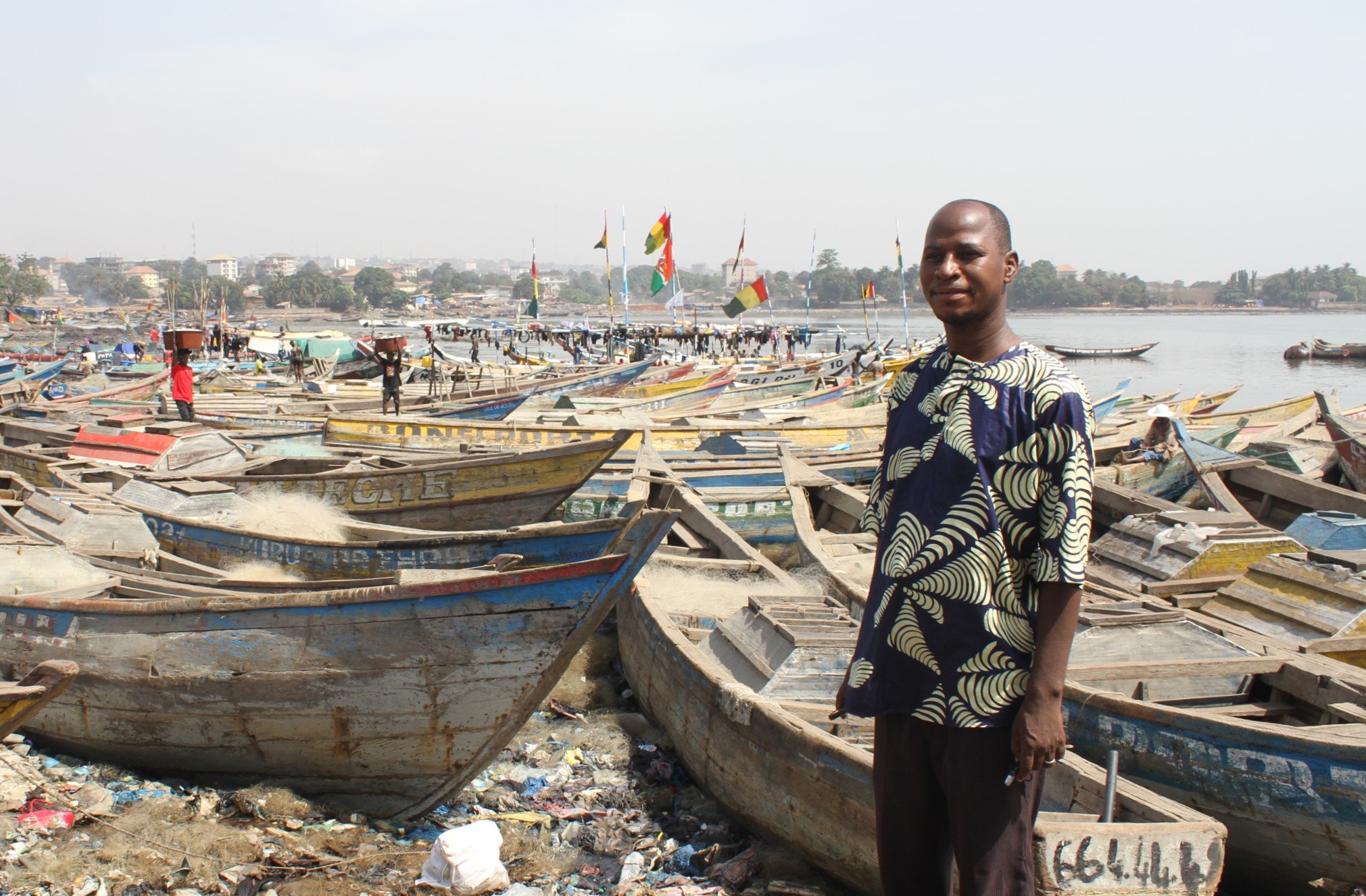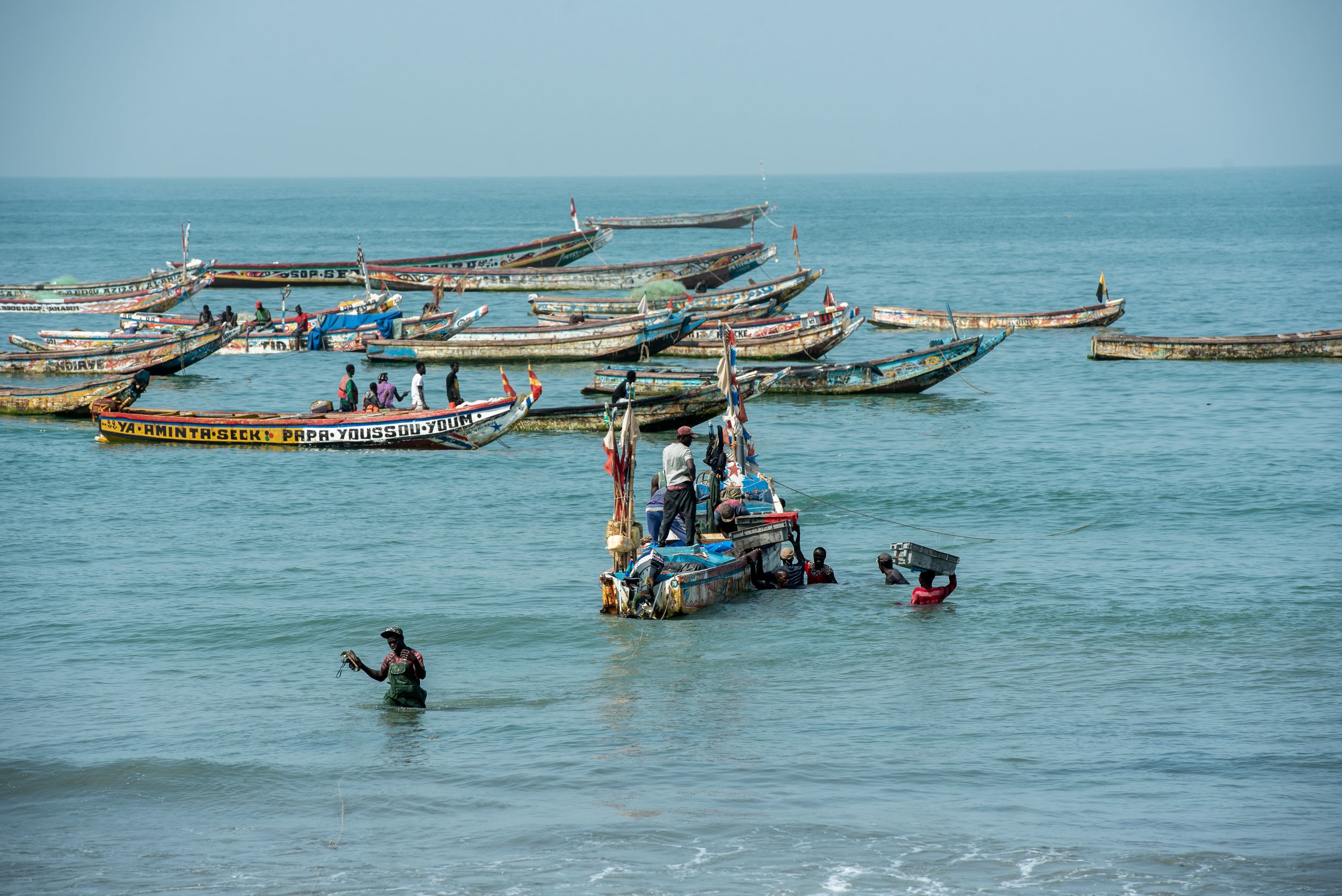Alhassane is a Guinean journalist. He has worked in several Guinean media including L'Observateur, the press group L'Indépendant/Le Démocrate. Since 2016, he has been a journalist at Guineenews.org. Alhassane has lately taken an interest into fisheries issues.
The European Commission is considering resumption of negotiations for a Sustainable Fisheries Partnership Agreement (SFPA) with Guinea.
This West African country open to the Atlantic Ocean has 300 km of coastline. Fishing is the main activity of the people living along the coast. Activities in this sector are regulated by the Maritime Fishing Code of 14 September 2015.
In a contribution to the negotiation mandate in 2020, CFFA stressed that in these negotiations, "[t]he EU must ensure that artisanal fishing activities are not encroached upon [...] in order to guarantee both the livelihoods of coastal communities and the food security of the population." This is an issue that artisanal fishermen have been denouncing for some time. Today, despite the measures put in place by the authorities, artisanal fishermen say they are victims of semi-industrial fishing activities, a category of fishing that "only exists in Guinea."
According to a decree by the Minister of Fisheries, Aquaculture and Maritime Economy, Ms Charlotte Daffé, signed on 29 December 2021, there are two categories of fishing in Guinea: artisanal fishing and industrial fishing. Artisanal fishing is subdivided into two sub-categories, according to Article 2 of the said Order: traditional artisanal fishing and motorised artisanal fishing. Under industrial fishing is a sub-category which is called semi-industrial fishing in Article 5 of the Order, that which fishermen are used to call "advanced artisanal fishing".
“Traditional artisanal fishing is any fishing carried out on foot or with the help of non-motorised pirogue-type vessels, whose mode of propulsion is paddling or sailing, and operating with fishing gear such as gillnets, hawks, lines, longlines and pots.””
Whereas Article 6 defines semi-industrial fishing:
“Semi-industrial fishing is any fishing carried out by a vessel of closed construction with an overall length (LOA) of less than or equal to 25m. The vessel must have a capacity of less than or equal to 45 GT (Gross Tonnage), and be propelled by an engine of more than 60 HP and less than or equal to 250 HP, which use mechanical means to set or raise the fishing gear on board, which only keep their catches on board by ice or salt.””
At the port of Bonfi, located in the Guinean capital, Conakry, artisanal fishermen believe that semi-industrial fishing only aims to deplete fisheries resources, thus compromising their future.
"It is only in Guinea that we find this category of fishing, because we have spoken with many other countries in the sub-region who tell us that there are only two types of fishing in their country. That is artisanal fishing and industrial fishing. Today they [the Guinean authorities, ed.] have created this form of fishing to destroy artisanal fishing because it [semi-industrial, ed.] is much more practiced in artisanal fishing areas," said Abdoulaye Soumah, Secretary General of the National Federation of Artisanal Fishers of Guinea (FENAPAG).
According to these fishermen, these vessels are operated mainly by people of Asian origin, which is contrary to the law, which specifies that semi-industrial fishing is reserved exclusively for fishermen of Guinean nationality. Soumah called on the Guinean authorities to take appropriate measures to curb the impetus of Asian fishermen at the risk of seeing marine resources disappear. "If the resource is depleted, what will be the future of Guinea? Because if there is no control, the resource will be depleted. And in this case, what will be our future? Provisions must be made."
CROAKERs AND ASIANS, A LOVE STORY
Chinese and Korean vessels are accused of coming to the coast to catch certain resources. Abdoulaye Soumah explains: "There is a species of fish called croaker that Koreans fish, because they are Korea's most prized species. And these croakers are most often found on the coast. Koreans found a way to fish for these croakers." The fishermen believe that the "semi-industrial fishing" category was created to allow these Asians to access areas closer to the coast, where the otholiths were found, but also coastal shrimps, another highly prized resource.
The Marine Fisheries Development and Management Plan for 2022 mentions that the semi-industrial fishing industry has a large quota of demersal fish (such as croakers) of almost 7,000 tonnes (92,000 tonnes for artisanal fisheries), 65,000 tonnes of small pelagics (183,000 tonnes for artisanal fisheries), and 15,000 tonnes of inshore shrimp (3,300 tonnes for artisanal fisheries). The plan also states (see page 11) that the number of semi-industrial fishing vessels is limited to 50, but in practice it would appear that there are many more.
Mohamed Condé, another artisanal fisherman at the Nènè port in Kamsar, in the prefecture of Boké, expressed the same concern. "We fishermen are not at ease. We go to sea, we don't catch any fish. So we spend money and earn nothing in return," he said on RTG, the national television, during the visit of the Minister of Fisheries to this locality on 8 February 2022. He accuses Chinese and Korean vessels of "fishing right up to the inlets," thus exceeding the limits of the fishing zones of the semi-industrial sector. "This is where we fish to meet our family needs," he complained.
Conflicts are recurrent between artisanal and semi-industrial fishermen, reports Abdoulaye Soumah. "At any given time, we are in conflict with them because they have gear with more than 250 hp, whereas we have the latest power of our engines, which is 40 hp. We are from the baseline to 12 nautical miles, and they [semi-industrial fishermen, ed.] from 12 miles to 18 or 20 nautical miles. But this is not respected. They come right up to the coast to fish.”
The failure of semi-industrial fishermen to respect the limit zone has serious consequences for artisanal fishermen. "There are many accidents at sea, because they have stronger boats than we do. If we meet, sometimes there are fatal accidents. There are losses of equipment," he says.
The Maritime Prefecture confirms that there are collisions between pirogues and semi-industrial fishing vessels, but specifies that these types of situations have not occurred in recent months.
At the level of the Ministry of Fisheries, Aquaculture and Maritime Economy, no one in charge wanted to react despite numerous requests made to the Secretary General of the department, then to the Director General of Fisheries. Both of them postponed several appointments and eventually refused to take our phone calls.
Header photo: Pirogues in Guinea by Aliou Diallo.









Although the protocol does not allow European fleets to fish for small pelagics because they are overexploited, at least 4 European vessels have reportedly reflagged to Guinea-Bissau and are fishing for these species in the region, jeopardising the region's food security and competing with small-scale fisheries.